by Robert Becker
When the Texas summer pushes the thermometer to triple digits, a lot of birders call it quits. I get it. It’s uncomfortable being outdoors, and from personal experience I know heat exhaustion is no joke. Plus, everybody says there’s fewer birds to see compared to spring, fall and winter.
This summer, I’m ignoring conventional wisdom. I get up early in the cooler hours and head out the door. I’ve been looking for some of the bird species that spend the summer here. I’ve watched them set up territories, sing their lusty songs, find a mate, build a nest, lay eggs and raise their young. This is a great way to offset the summer birding blahs.
In short order I found five species to track. The songbirds were an easy choice, given their eye-pleasing colors and plumages. I spent hours watching Painted Buntings, Dickcissels, Scissor-tailed Flycatchers and Common Yellowthroats. I also kept an eye on a pair of Northern Harriers that were cooperatively hunting together and likely are nesting at the park.
When the weather gets hot I bird a lot of days at Galveston Island State Park, with its abundance of wetlands, beachfront and oak mottes. My sidekick on these jaunts is my faithful pooch Cody, who’s used to my start-and-stop method of walking the trails. He’s very patient when I raise my binoculars to search for a bird heard calling in the trees.
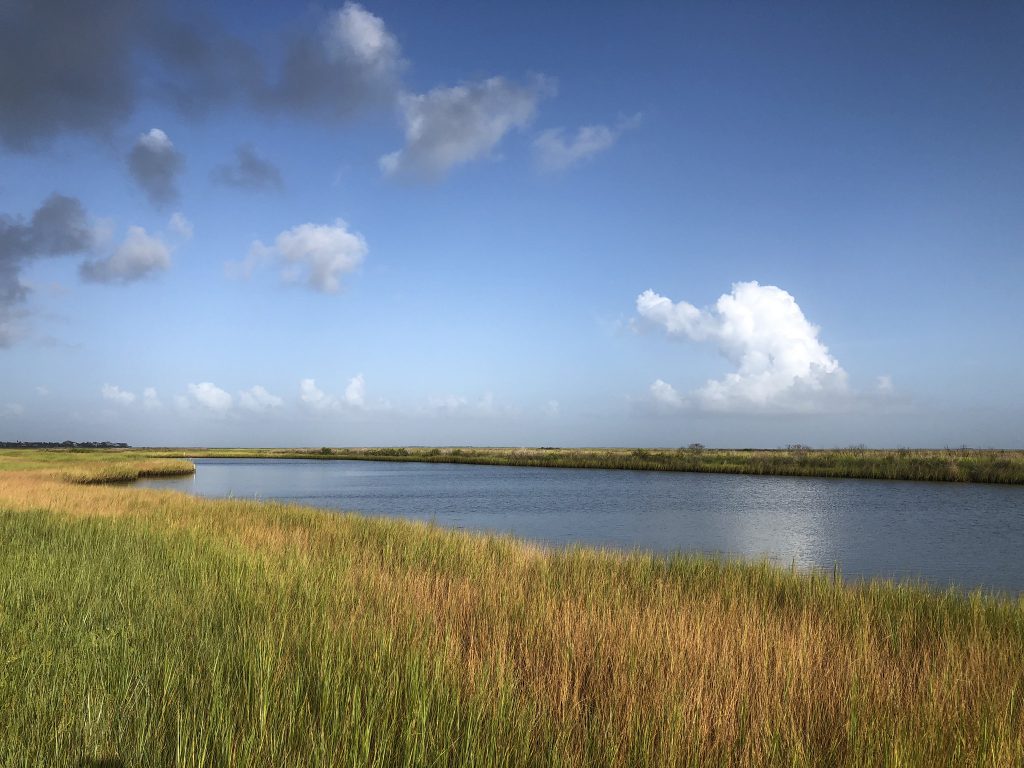
About a month ago, I noticed two Painted Bunting pairs at the park. I found one singing male near the second pond on the Duck Pond Trail, near the park’s entrance kiosk. Then I saw a second pair of these colorful buntings in the mottes near the Clapper Rail Trail parking lot. The male bunting perches atop the tallest tree, usually on a bare branch or snag, throws back its head, and sings its melodic song. The Sibley Guide to Birds describes it as “a sweet, continuous warble… with unbroken singsong rhythm.” I haven’t seen a nest, but I suspect there is one nearby, hidden in the dense thicket.
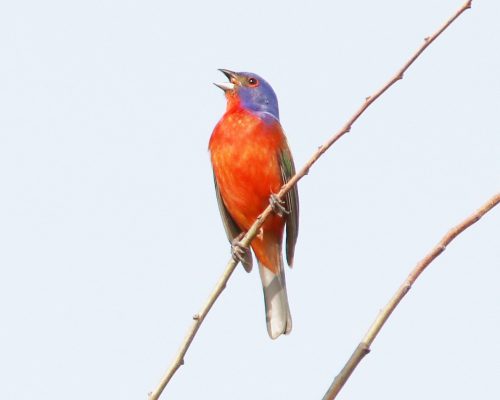
There probably are dozens of Common Yellowthroats in the park, and typically I hear their wichety witchety witchety song on both sides of the paved road to the Jenkins Bayou kayak paddling trail and along the Caracara trail. Males are intensely competitive and their song advertises their fitness as a mate and warns competing males to stay away. Sometimes, though, females may mate with other males behind their husbands’ back! In breeding plumage the males sport a bright yellow throat and breast and a broad dark mask across the face, bordered by a bright white stripe back of it. You find them in marshy or brushy habitat close to water and close to the ground. They are ubiquitous throughout the park and are found throughout the year. They build their well-hidden nests close to the ground in dense vegetation.
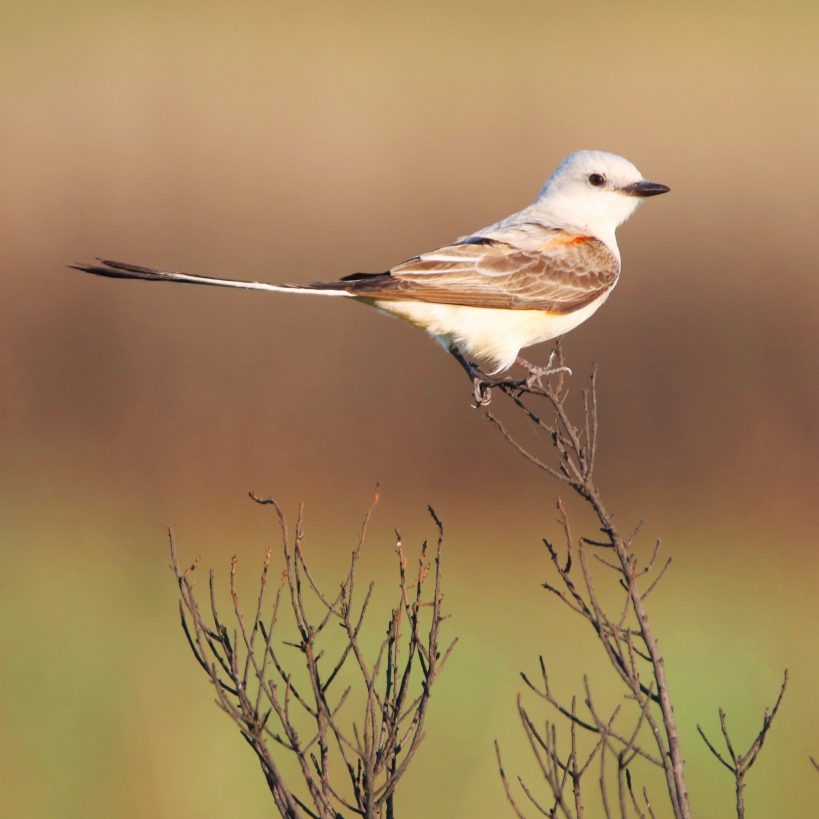
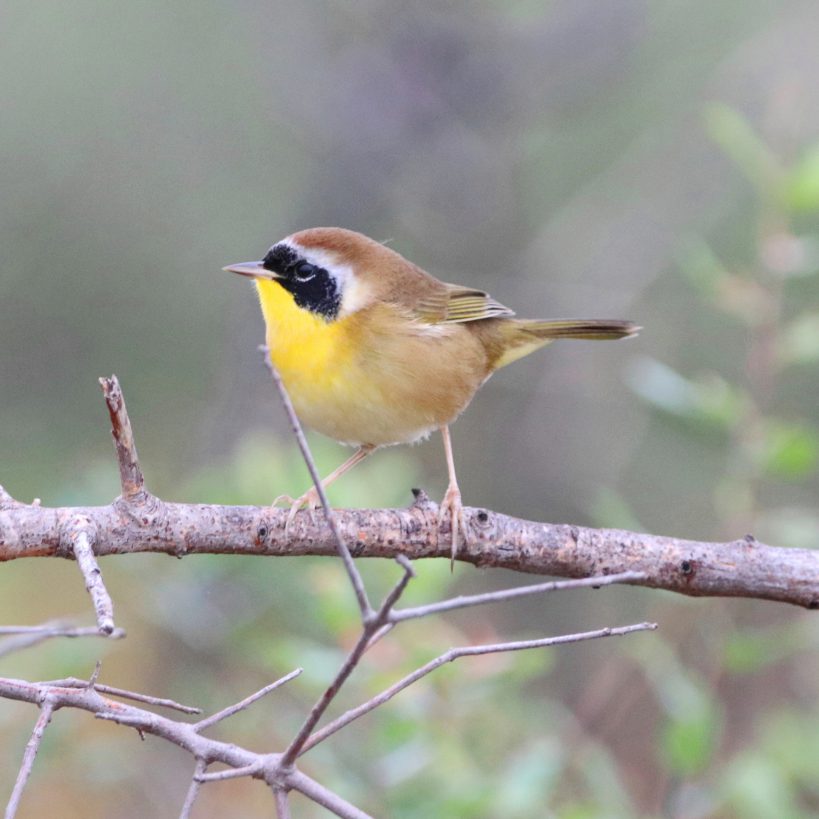
Scissor-tailed Flycatchers, aka the Texas Trogon, are one of the island’s showiest summer species and are seen at many locations around the island. They have, relative to their small size, one of the most impressive tails of any bird species. They arrive in March and stick around for the rest of the year. Their long tails are unmistakable, and their loud songs and calls are heard pretty much everywhere. They can be remarkably tame. If you see one on a fence post, approach slowly in your vehicle. This flycatcher may pose for a photo or two before flying off to another post nearby. Look for their white head and the pale, peachy color of their flanks when perched.
Dickcissels look like sparrows and are found in grassland habitats. From some angles they also resemble a smaller version of a meadowlark. When I first started noticing them a few weeks ago I saw just one or two at a time. In my more recent encounters I saw five or six in the same area of the state park. Some of those birds looked like first year hatch birds with their spotty juvenile plumages. Dickcissels are so named because their song sound sounds like dick-dick-cissel. It’s a soft and faint song and you have to listen carefully to find one in a grassy field. Another way to find them is to walk a trail in grassy habitat and make a pishing sound. I did this last week and a pair of Dickcissels popped up out of nowhere and followed me along for a while. The two birds, which are pictured here, seemed to be playing tag as they raced from one brushy shrub to another. Most likely they were fighting over breeding territory.
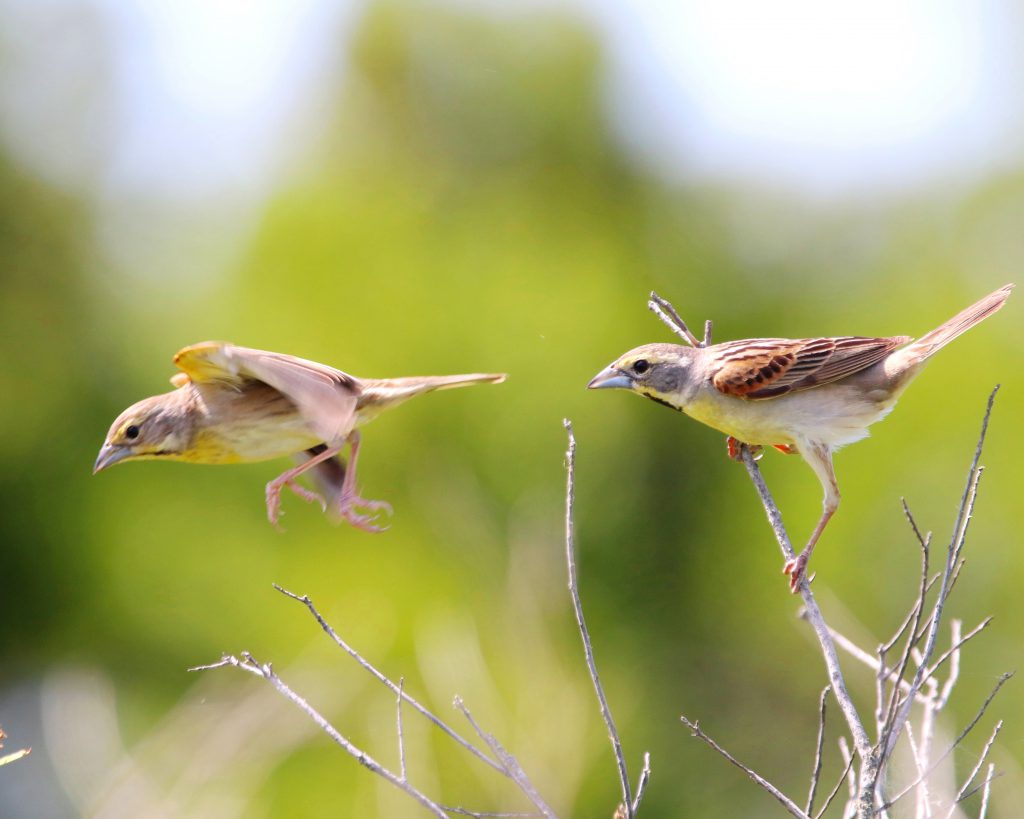
I always enjoy watching Northern Harriers at the park. They are a large, majestic hawk, and they often hover above at considerable height as they scan the ground below for prey animals. I was driving slowly along a park road a few weeks ago when I noticed a pair of Northern Harriers flying near one another high above the prairie. I stopped out and took a few photographs. A male harrier had a rat in its talons, and it dropped the rodent to the female waiting just below. The female failed to catch the rat in mid-air and dived after it. She recovered the rat, then flew with it to a nearby stand of trees, where I suspect the harriers have a nest with some young birds to feed.
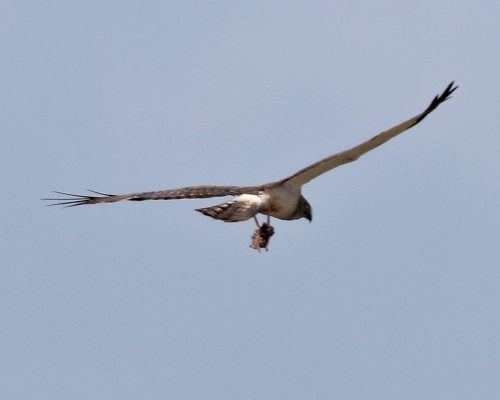
These are just a few of the cool birds to be found here in the summer. Grab your bins and find some more!
[ABTM id=8507]
